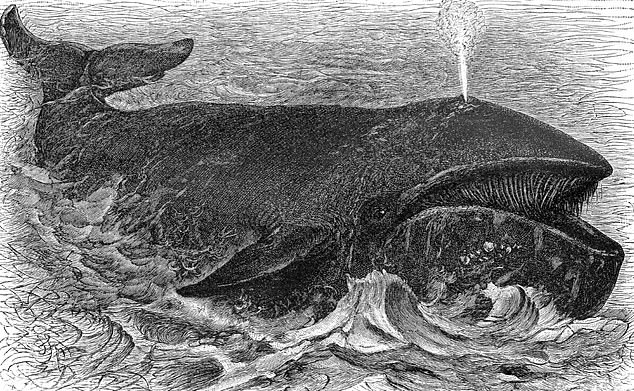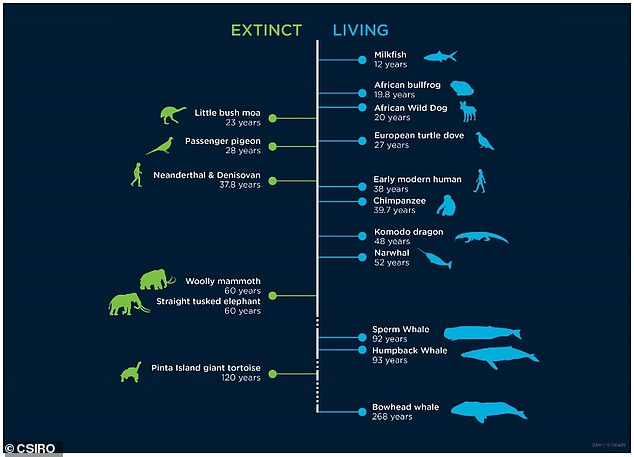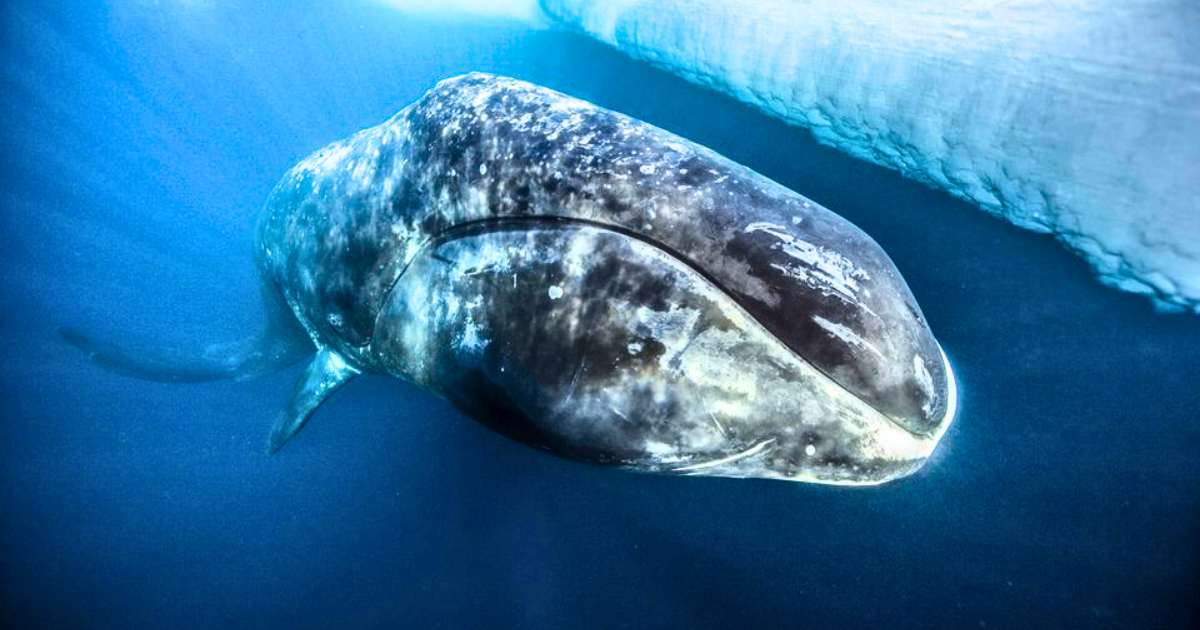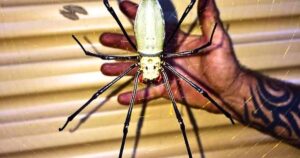Imagine a creature that was already swimming through icy Arctic waters before the United States even existed.
While humans were still sailing wooden ships and lighting homes with candles, this whale may have been gliding beneath the ice — and it’s still alive today.
Scientists now believe that the bowhead whale, a massive Arctic species, can live up to 268 years, making it the longest-living mammal on Earth — older than nations, empires, and almost every human monument.
A Whale Older Than History
To put it in perspective: if a bowhead whale was born in 1751, it would have been alive 25 years before the Declaration of Independence and seven years before Admiral Nelson’s birth.
It might have heard the distant echoes of harpoons launched by 18th-century whalers — and survived them.
This isn’t just theory. In 2007, Alaskan hunters found an old bowhead whale with a 200-year-old harpoon head embedded deep in its flesh.
It had lived through two centuries of storms, wars, and industrial revolutions — and was still swimming.

Read Next: Beluga Mesmerized by Violin — The Whale That Danced to Music Beneath the Waves
How Scientists Measured the Whale’s Age
Until recently, researchers estimated bowhead lifespans using amino acids in the eye lens, which accumulate in predictable ways over time.
That method revealed individuals over 200 years old — already astonishing.
But a new study from Australia’s national science agency (CSIRO) has pushed that limit even further.
By examining 42 genes across multiple species, scientists built a DNA methylation “clock” — a tool that predicts lifespan by measuring chemical changes in genes over time.
When applied to bowhead whales, the results stunned them: an average life expectancy of 268 years.
The Science Behind Living Centuries
Lead researcher Dr. Benjamin Mayne of CSIRO explained how they reached their results:
“Vertebrates range hugely in lifespan — from the pygmy goby, which lives only eight weeks, to the bowhead whale that can live for almost three centuries,” he said.
DNA methylation acts like a biological calendar. As animals age, chemical tags build up on their genes, changing how DNA is read and expressed. By analyzing patterns across hundreds of species, scientists can estimate how long a body is designed to last — regardless of when it actually dies.
This method not only redefines what we know about aging but also provides clues about evolution, resilience, and extinction risk.

Also Read: Truly Unique Mother Lioness Nurses Leopard Cub, Cares for It Like Her Own
Why the Bowhead Whale Lives So Long
The bowhead whale’s body is built for survival in one of the harshest environments on Earth — the Arctic Ocean.
Its thick blubber layer protects it from freezing temperatures, while its slow metabolism conserves energy and reduces cellular stress — two major contributors to longevity.
Even more fascinating, bowheads show minimal signs of aging at a cellular level. Their DNA repair mechanisms and cancer resistance appear far superior to ours.
Some scientists believe studying their biology could unlock new clues to human aging and disease prevention.
The Whale That Outlived Empires
If the average bowhead whale can truly live for 268 years, that means some individuals alive today may have witnessed:
-
The rise and fall of Napoleon’s empire
-
The invention of the steam engine
-
The first electric light bulb
-
And the moment humans first landed on the moon
All while gliding through frigid waters under polar skies — silent, ancient witnesses to human history.
Genetic Clock Reveals More Than Whales
CSIRO’s genetic “lifespan clock” didn’t just redefine whale longevity — it also gave scientists a window into extinct species.
By applying the same DNA model to ancient genomes, researchers estimated that:
-
Woolly mammoths lived roughly 60 years, similar to modern elephants.
-
Neanderthals and Denisovans had maximum lifespans of around 38 years — nearly identical to early Homo sapiens.
For humans, the study estimated a natural lifespan ceiling of 38 years, aligning with archaeological findings.
Our extended modern lives — now often exceeding 80 years — are due not to evolution, but medicine, sanitation, and technology.
A Living Reminder of the Deep Past
Bowhead whales are now seen as a kind of living time capsule — creatures whose memories stretch beyond any human lifetime.
Each one carries the genetic wisdom of centuries: how to survive polar winters, evade hunters, and keep living while the world changes above.
“It’s incredible to think there’s an animal alive today that may have been swimming when Captain Cook first reached Australia,” said Dr. Mayne.
In a sense, bowheads are guardians of the Arctic, drifting through waters older than our recorded history, still singing in low, haunting calls that echo across ice and time.
Why It Matters
Understanding how and why bowhead whales live so long could reshape how we study aging — not just in animals, but in ourselves.
Their slow cell division, strong DNA repair, and resistance to diseases like cancer hint at biological pathways we barely understand.
And yet, their biggest threat isn’t age — it’s us.
Climate change, melting ice, and increased shipping noise threaten their ancient habitats more than ever.
The oldest whale on Earth may still be alive — but whether its descendants will see another century depends on the choices we make now.


